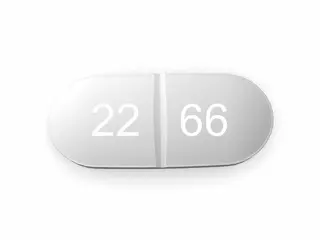Muscle Relaxant
Effective muscle relaxants to relieve tension, reduce spasms, and improve mobility. Shop trusted brands for fast, reliable relief and support your recovery today.
Muscle relaxants play a crucial role in managing muscle spasms, stiffness, and pain. These medications are often prescribed to patients with conditions such as multiple sclerosis, spinal cord injury, and musculoskeletal disorders. Among the most popular muscle relaxants are Baclofen, Robaxin, and Zanaflex. Each of these drugs works differently but aims to reduce muscle tension and improve mobility.
Baclofen is widely used for treating spasticity caused by neurological conditions. It acts on the central nervous system to decrease the frequency and severity of muscle spasms. Patients often report significant relief after starting Baclofen. The drug can be taken orally or administered via an intrathecal pump for severe cases. One of the main benefits of Baclofen is its effectiveness in controlling muscle rigidity without causing excessive sedation. However, some users experience side effects such as drowsiness, dizziness, and weakness when beginning treatment. It is important to start with a low dose and increase gradually as prescribed by a healthcare professional.
Robaxin, known generically as methocarbamol, is another muscle relaxant commonly prescribed. Its primary use is to relieve muscle pain and spasms associated with acute musculoskeletal conditions. Robaxin works by depressing the central nervous system, which helps reduce muscle tone and discomfort. Many patients appreciate how quickly Robaxin can alleviate muscle spasms. This medication is often combined with rest and physical therapy for best results. Unlike Baclofen, Robaxin tends to cause less fatigue, making it suitable for daytime use. Side effects can include nausea, headache, and sometimes blurred vision. It is generally well tolerated and considered safe for short-term use.
Zanaflex, or tizanidine, is favored for its muscle-relaxing and analgesic properties. It is often prescribed for managing spasticity due to conditions like multiple sclerosis and spinal cord injury. Zanaflex works by blocking nerve impulses that cause muscles to contract. This medication is valued for its rapid onset and relatively short duration of action, which allows flexible dosing schedules. Patients often notice improvement in muscle stiffness and pain relief shortly after taking Zanaflex. Common side effects include dry mouth, drowsiness, and low blood pressure. Because of its sedative effects, caution is advised when performing tasks that require alertness. Zanaflex should be taken exactly as prescribed to avoid withdrawal symptoms.
When choosing a muscle relaxant, factors like the specific medical condition, side effect profile, and mode of administration are important. Baclofen is preferred for chronic spasticity due to its continuous effect. Robaxin is typically selected for short-term relief of acute muscle injuries. Zanaflex offers flexibility and is useful for intermittent muscle spasms. Each medication should be used under medical supervision to ensure safety and effectiveness.
Muscle relaxants are not recommended for everyone. Patients with liver or kidney problems, or certain heart conditions, should inform their doctor before using these drugs. Additionally, combining muscle relaxants with alcohol or other sedatives can increase the risk of drowsiness and respiratory depression. Regular follow-up with a healthcare provider helps monitor response and adjust dosages if needed.
In terms of availability, Baclofen, Robaxin, and Zanaflex are accessible in most pharmacies and can be prescribed in various doses and forms. Oral tablets are common, but Baclofen also comes as a liquid solution. The choice between these products depends on the patient's condition and lifestyle. Monitoring for side effects and adhering to prescribed doses is essential to prevent complications.
Patients using muscle relaxants often benefit from combining medication with physical therapy and proper rest. This approach enhances recovery and reduces reliance on drugs. It is important to communicate any adverse reactions or lack of improvement to a healthcare provider promptly.
Overall, Baclofen, Robaxin, and Zanaflex are effective options for managing muscle spasms and pain. Each has distinct advantages and considerations. Their proper use can significantly improve quality of life for individuals with muscle-related conditions.


